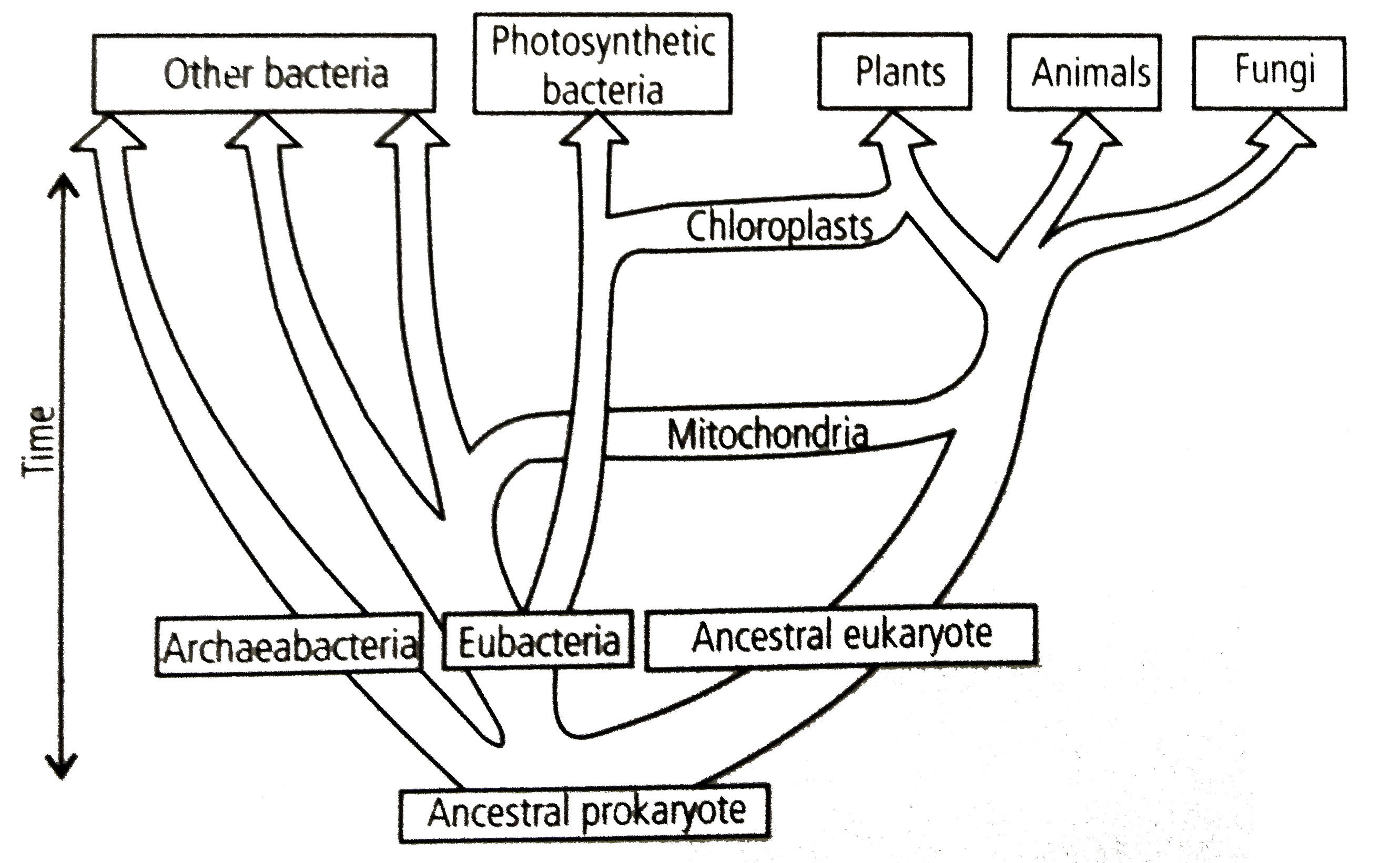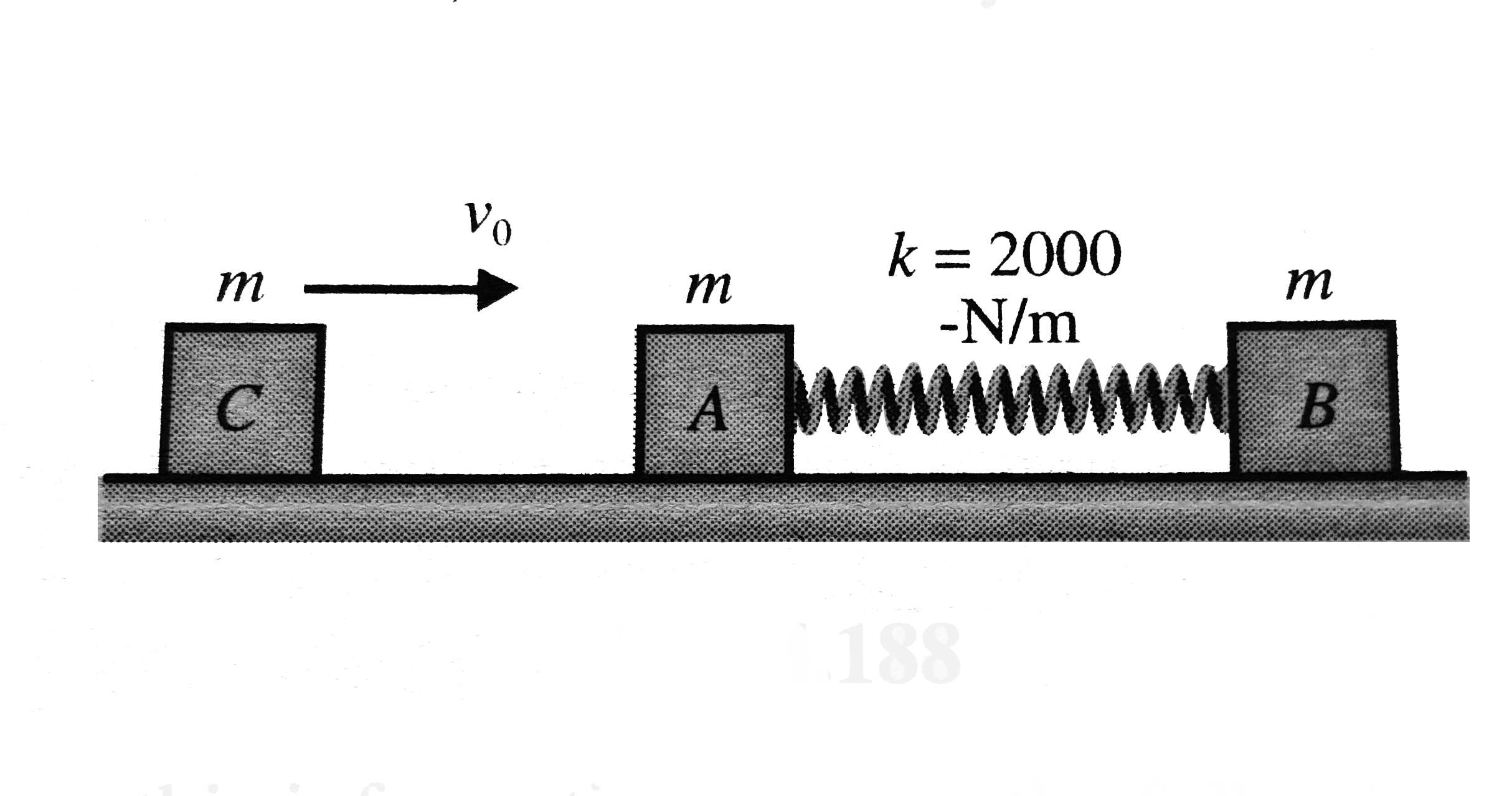Given diagram illustrates an evolutionary tree.

Which of the following statements can be deduced from the given evolutionary tree?
(i) The ancestral eukaryotes were anaerobic.
(ii) All eukaryotes were anaerobic.
(ii) All eukaryotes possess mitochondria.
(iii) Eubacteria and Eukaryota have a common ancestor whereas Archebacteria have a unique and independent origin.
(iv) Mitochondria and chloroplasts have similar genomes.
(v) Mitochondria are presents in plants, animals and fungi.
(vi) chloroplasts and mitochondria arose asendosymbionts.
(vii) Fungi and animals lost chloroplasts during evolution. Solution in Odia
iii,v and vi
i,v and vi
ii,iii,iv and v
i,v,vi and vii
The correct Answer is:B
NA
Similar Questions
Of the following , what do mitochondria and chloroplast have in common
View SolutionThe matrix of both chloroplast and mitochondria are similar in having
View Solution
Two identical blocks A and B, each of mass m=3kg, are connected with the help of an ideal spring and placed on a smooth horizontal surface as shown in Fig. Another identical blocks C moving velocity v0=0.6ms collides with A and sticks to it, as a result, the motion of system takes place in some way
Based on this information answer the following questions:
Q. Oscillation energy of the system i.e., part of the energy which is oscillation (changing) between potention and kinetic forms is
View Solutionदिया गया चित्र एक विकासीय वृक्ष (Evolutionary Tree) को दर्शाता है।

दिए गए विकासीय वृक्ष (Evolutionary Tree) से निम्न में से किस कथन को परिणामित किया जा सकता है?
(i) पैतृक यूकैरियोट्स अनॉक्सी थे।
(ii) सभी यूकैरियोट्स में माइटोकॉन्ड्रिया होते हैं।
(iii) यूबैक्टीरिया एवं यूकैरियोटा के पितृ उभय (Common Ancestor) हैं जबकि आर्कीबैक्टीरिया का उद्गम अद्वितीय (Unique) व स्वतंत्र है।
(iv) माइटोकॉन्ड्रिया व क्लोरोप्लास्ट के जीनोम समान होते हैं।
(v) माइटोकॉन्ड्रिया पौधों, जीवों एवं फंजाई में उपस्थित होते हैं। (vi) क्लोरोप्लास्ट व माइटोकॉन्ड्रिया का उदय अन्तः सहजीवियों (Endosymbionts) के रूप में हुआ।
(vii) फंजाई व जीवों ने विकास के दौरान क्लोरोप्लास्ट्स खो दिए।
View SolutionAre mitochondria present in all eukaryotic cells?
View SolutionWhat is the site of glycolysis pathway in all living organisms? (a) Cytoplasm in anaerobes whereas mitochondria in aerobes (b) Mitochondria in anaerobes whereas cytoplasm in aerobes (c) Cytoplasm in both anaerobes and aerobes (d) Mitochondria in both anaerobes and aerobes
View Solutionइनमें से कौन सा/से कथन सत्य हैं?
(i) एक प्रोकैरियोटिक कोशिका में कोशिकीय क्रियाओं (Functions) हेतु उपलब्ध पृष्ठ क्षेत्र एक यूकेरियोटिक कोशिका की अपेक्षा कम होता है।
(ii) एक प्रोकैरियोटिक कोशिका का कुल जीनोम आकार एक यूकैरियोटिक कोशिका से सदैव कम होता है।
(iii) यूकैरियोट्स के विपरीत, प्रोकैरियोट्स में विशेष श्वसन अंग नहीं पाए जाते हैं। अत: वे यूकेरियोट्स की अपेक्षा अत्यधिक कम दर पर श्वसन करते हैं।
(iv) यूकैरियोटिक कोशाएँ विभिन्न प्रकार के झिल्ली आबद्ध अंगकों को दर्शाती हैं, जैसे हरित लवक तथा केन्द्रक, जबकि प्रोकैरियोट्स में केवल राइबोसोम ही एकमात्र झिल्ली आबद्ध अंगक होता है।
View Solution$ Unicellular eukaryotes are the simplest organisms. ! Prokaryotes have the mitochondria whereas eukaryotes are without mitochondria.
View Solution
